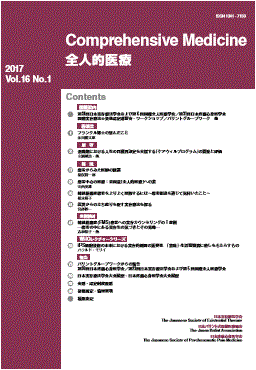Volume 19, Issue 1
Displaying 1-8 of 8 articles from this issue
- |<
- <
- 1
- >
- >|
Foreword
-
2021Volume 19Issue 1 Pages 1-2
Published: March 25, 2021
Released on J-STAGE: April 02, 2021
Download PDF (595K)
Original Paper
-
2021Volume 19Issue 1 Pages 3-10
Published: March 25, 2021
Released on J-STAGE: April 02, 2021
Download PDF (1316K)
Review Article
-
2021Volume 19Issue 1 Pages 11-20
Published: March 25, 2021
Released on J-STAGE: April 02, 2021
Download PDF (1871K) -
2021Volume 19Issue 1 Pages 21-30
Published: March 25, 2021
Released on J-STAGE: April 02, 2021
Download PDF (1414K)
Case Report
-
2021Volume 19Issue 1 Pages 31-39
Published: March 25, 2021
Released on J-STAGE: April 02, 2021
Download PDF (1887K) -
2021Volume 19Issue 1 Pages 40-49
Published: March 25, 2021
Released on J-STAGE: April 02, 2021
Download PDF (3199K)
Short Report
-
2021Volume 19Issue 1 Pages 50-55
Published: March 25, 2021
Released on J-STAGE: April 02, 2021
Download PDF (4232K)
WHO Lecture series
-
2021Volume 19Issue 1 Pages 56-68
Published: March 25, 2021
Released on J-STAGE: April 02, 2021
Download PDF (1684K)
- |<
- <
- 1
- >
- >|
